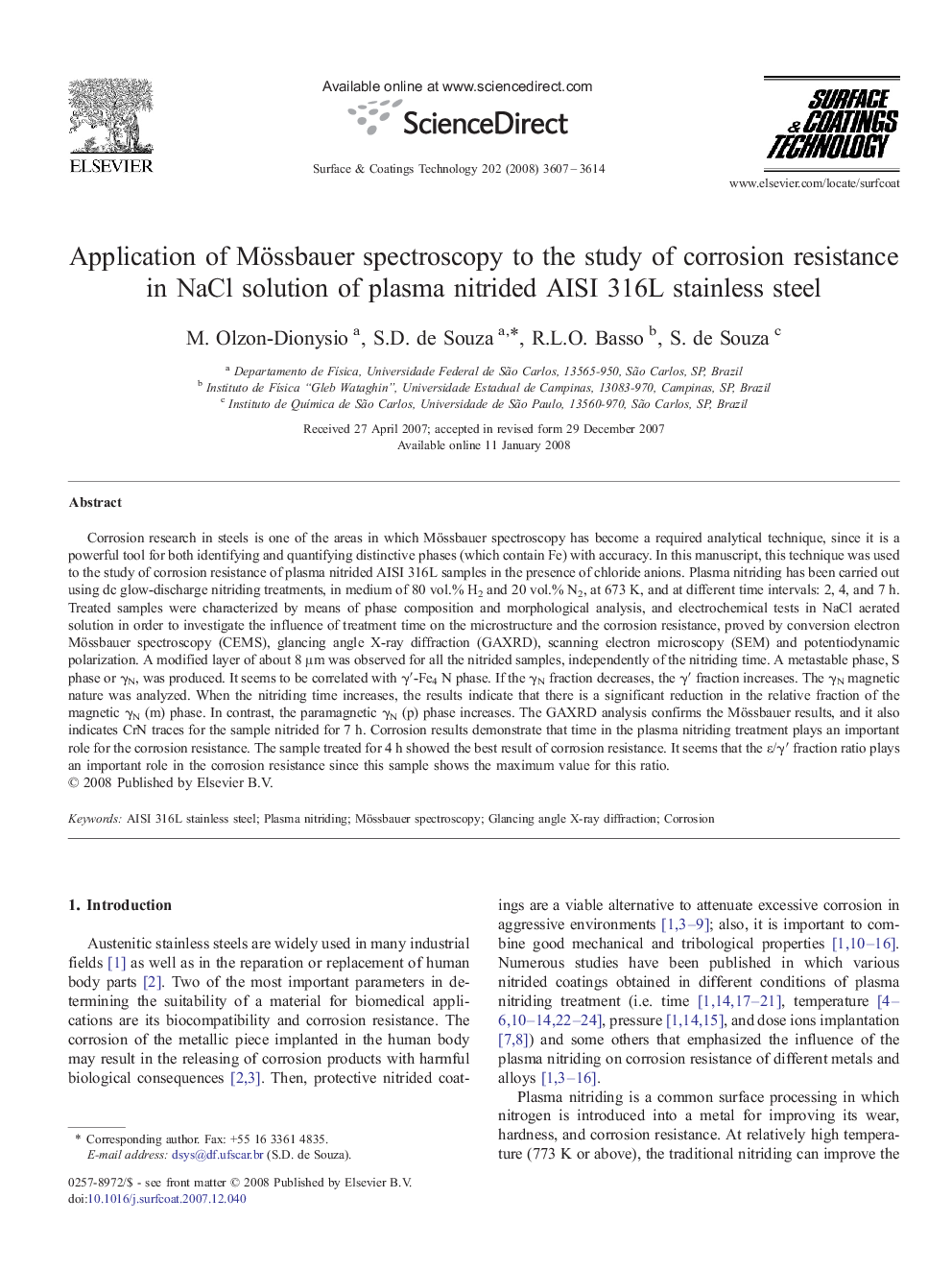| Article ID | Journal | Published Year | Pages | File Type |
|---|---|---|---|---|
| 1661430 | Surface and Coatings Technology | 2008 | 8 Pages |
Corrosion research in steels is one of the areas in which Mössbauer spectroscopy has become a required analytical technique, since it is a powerful tool for both identifying and quantifying distinctive phases (which contain Fe) with accuracy. In this manuscript, this technique was used to the study of corrosion resistance of plasma nitrided AISI 316L samples in the presence of chloride anions. Plasma nitriding has been carried out using dc glow-discharge nitriding treatments, in medium of 80 vol.% H2 and 20 vol.% N2, at 673 K, and at different time intervals: 2, 4, and 7 h. Treated samples were characterized by means of phase composition and morphological analysis, and electrochemical tests in NaCl aerated solution in order to investigate the influence of treatment time on the microstructure and the corrosion resistance, proved by conversion electron Mössbauer spectroscopy (CEMS), glancing angle X-ray diffraction (GAXRD), scanning electron microscopy (SEM) and potentiodynamic polarization. A modified layer of about 8 μm was observed for all the nitrided samples, independently of the nitriding time. A metastable phase, S phase or γN, was produced. It seems to be correlated with γ′-Fe4 N phase. If the γN fraction decreases, the γ′ fraction increases. The γN magnetic nature was analyzed. When the nitriding time increases, the results indicate that there is a significant reduction in the relative fraction of the magnetic γN (m) phase. In contrast, the paramagnetic γN (p) phase increases. The GAXRD analysis confirms the Mössbauer results, and it also indicates CrN traces for the sample nitrided for 7 h. Corrosion results demonstrate that time in the plasma nitriding treatment plays an important role for the corrosion resistance. The sample treated for 4 h showed the best result of corrosion resistance. It seems that the ε/γ′ fraction ratio plays an important role in the corrosion resistance since this sample shows the maximum value for this ratio.
